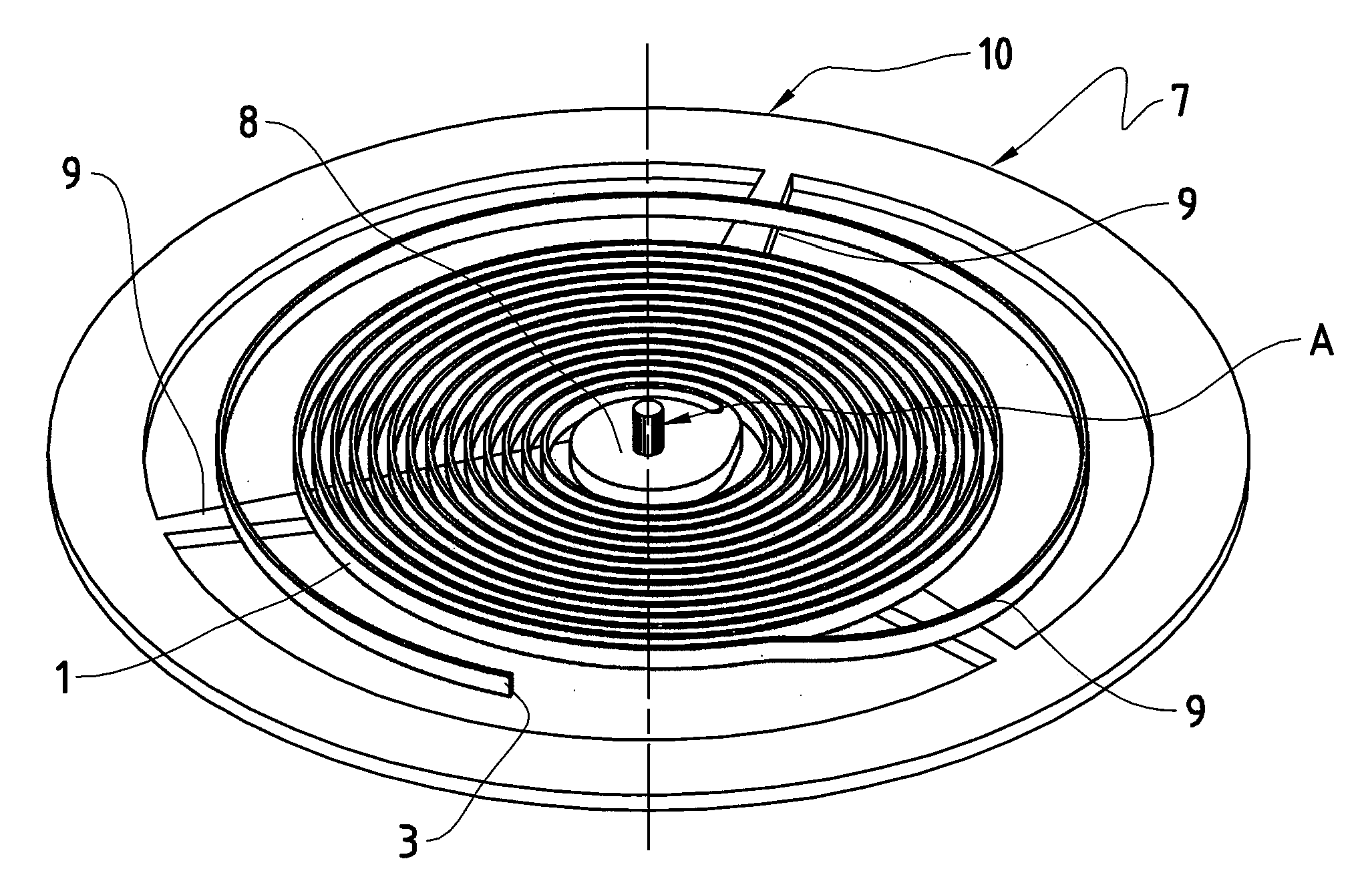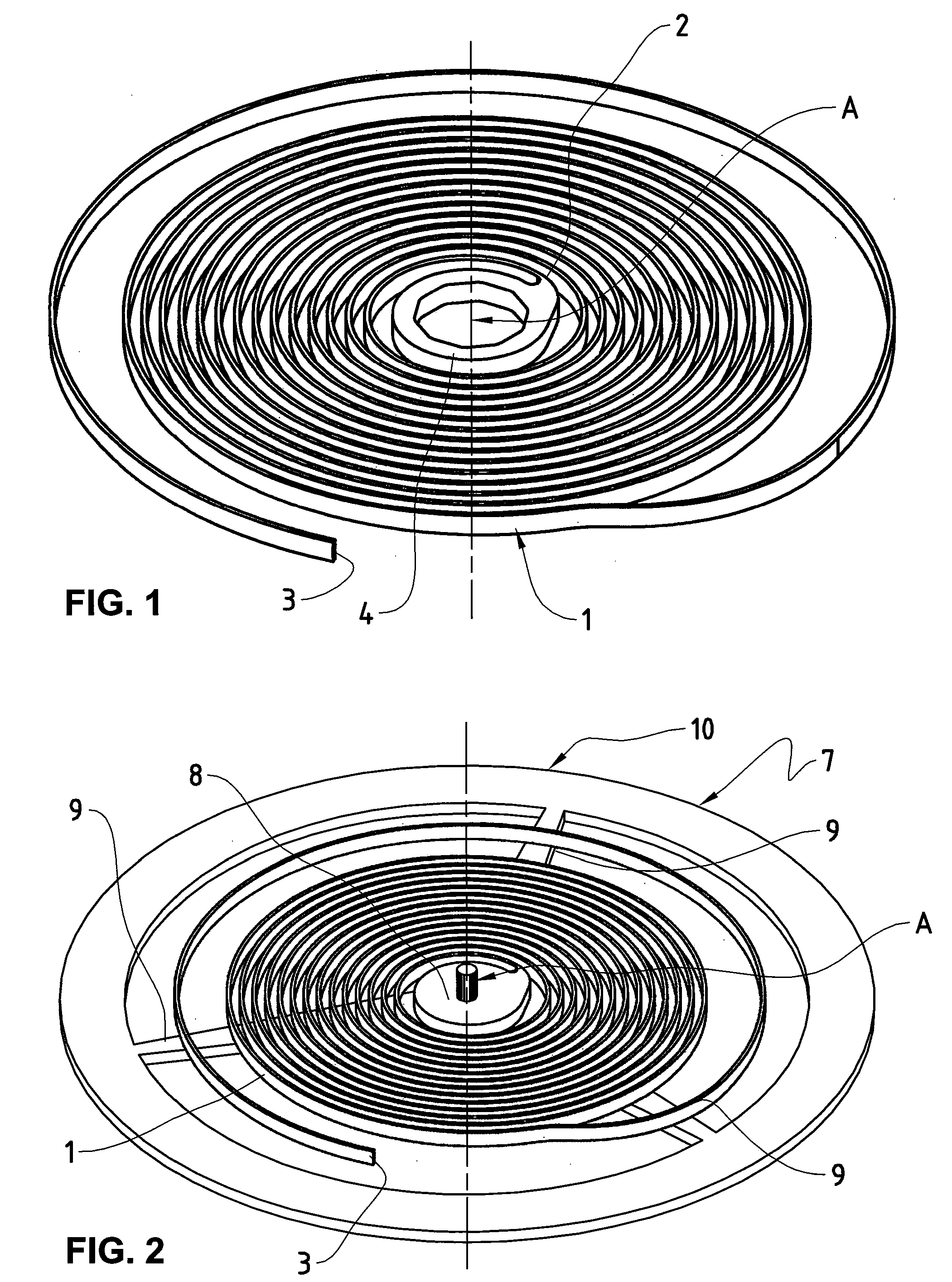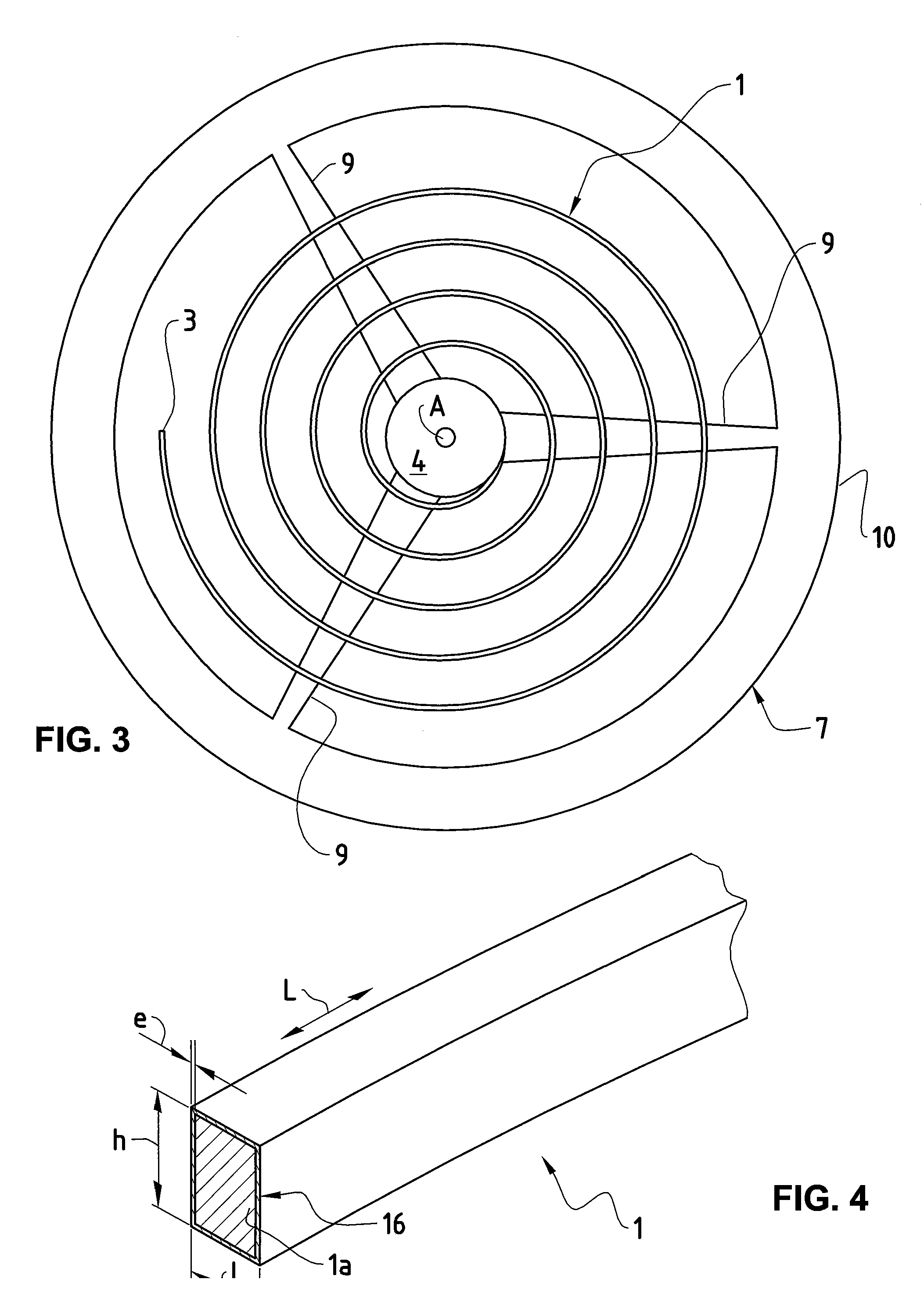Mechanical oscillator having an optimized thermoelastic coefficient
a mechanical oscillator and thermoelastic coefficient technology, applied in the field of mechanical oscillators, can solve the problems of complex implementation of methods, inability to adapt to different types of balances, and low sensitivity to thermal variations
- Summary
- Abstract
- Description
- Claims
- Application Information
AI Technical Summary
Benefits of technology
Problems solved by technology
Method used
Image
Examples
Embodiment Construction
[0037]FIG. 1 represents an example embodiment of a spiral spring 1 which can be used in a mechanical oscillator according to the invention. The spiral spring 1 has a central end 2 and an eccentric end 3. The central end 2 is integral with a rotary collet 4, provided with an orifice intended to receive an arbor of rotation about an axis of rotation A (represented by a broken line). The rotary collet 4 is intended to be mounted on a stationary support (not shown). The rotary collet 4 and the spiral spring 1 can be produced in particular in a ingle piece, without a separate mounting being necessary. It is nevertheless also conceivable for the rotary collet 4 to be formed separately and be fixed to the central end 2 of the spiral spring 1 by means of a known mounting. The eccentric end 3 is intended to be integral with a stationary element called “balance-cock” and not represented in the figures. For this purpose several means of common mountings are possible.
[0038]The mechanical oscill...
PUM
 Login to View More
Login to View More Abstract
Description
Claims
Application Information
 Login to View More
Login to View More - R&D
- Intellectual Property
- Life Sciences
- Materials
- Tech Scout
- Unparalleled Data Quality
- Higher Quality Content
- 60% Fewer Hallucinations
Browse by: Latest US Patents, China's latest patents, Technical Efficacy Thesaurus, Application Domain, Technology Topic, Popular Technical Reports.
© 2025 PatSnap. All rights reserved.Legal|Privacy policy|Modern Slavery Act Transparency Statement|Sitemap|About US| Contact US: help@patsnap.com



